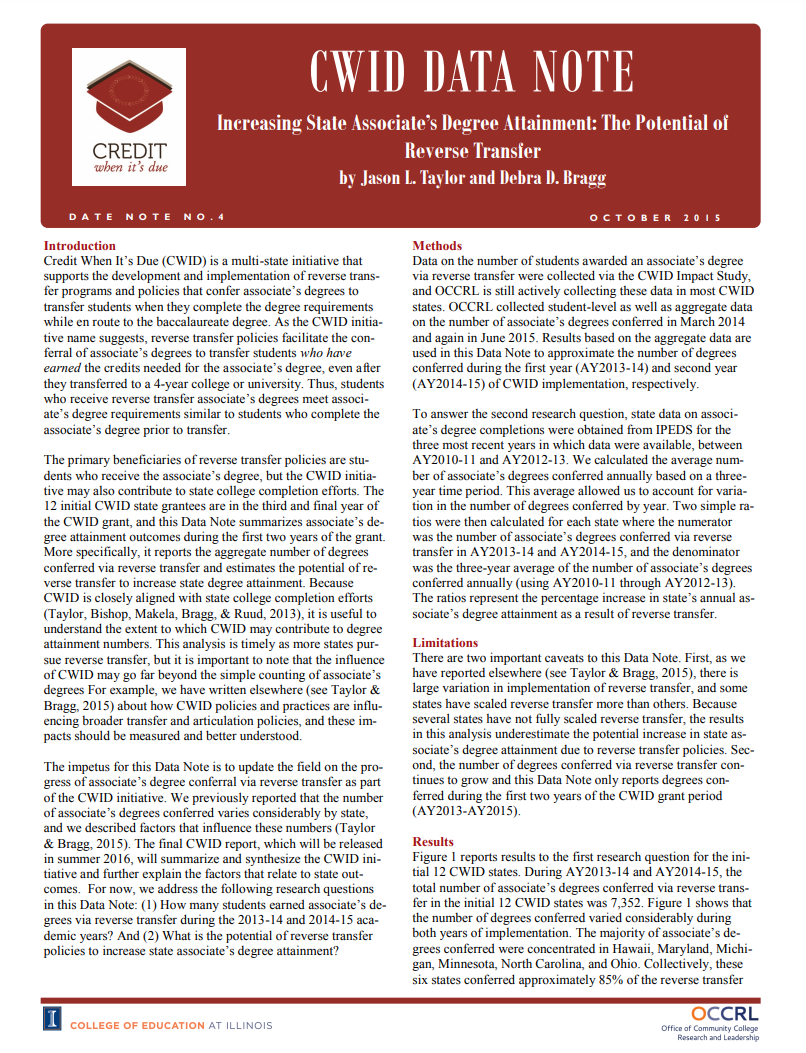CWID Data Note: Increasing State Associate’s Degree Attainment: The Potential of Reverse Transfer
Author(s): Jason L. Taylor, Debra D. Bragg
Publisher: Office of Community College Research and Leadership (OORCL), University of Illinois
Year: 2015
Description
Credit When It’s Due (CWID) is a multi-state initiative that supports the development and implementation of reverse transfer programs and policies that confer associate’s degrees to transfer students when they complete the degree requirements while en route to the baccalaureate degree. As the CWID initiative name suggests, reverse transfer policies facilitate the conferral of associate’s degrees to transfer students who have earned the credits needed for the associate’s degree, even after they transferred to a 4-year college or university. Thus, students who receive reverse transfer associate’s degrees meet associate’s degree requirements similar to students who complete the associate’s degree prior to transfer.
The primary beneficiaries of reverse transfer policies are students who receive the associate’s degree, but the CWID initiative may also contribute to state college completion efforts. The 12 initial CWID state grantees are in the third and final year of the CWID grant, and this Data Note summarizes associate’s degree attainment outcomes during the first two years of the grant. More specifically, it reports the aggregate number of degrees conferred via reverse transfer and estimates the potential of reverse transfer to increase state degree attainment. Because CWID is closely aligned with state college completion efforts (Taylor, Bishop, Makela, Bragg, & Ruud, 2013), it is useful to understand the extent to which CWID may contribute to degree attainment numbers. This analysis is timely as more states pursue reverse transfer, but it is important to note that the influence of CWID may go far beyond the simple counting of associate’s degrees For example, we have written elsewhere (see Taylor & Bragg, 2015) about how CWID policies and practices are influencing broader transfer and articulation policies, and these impacts should be measured and better understood.

